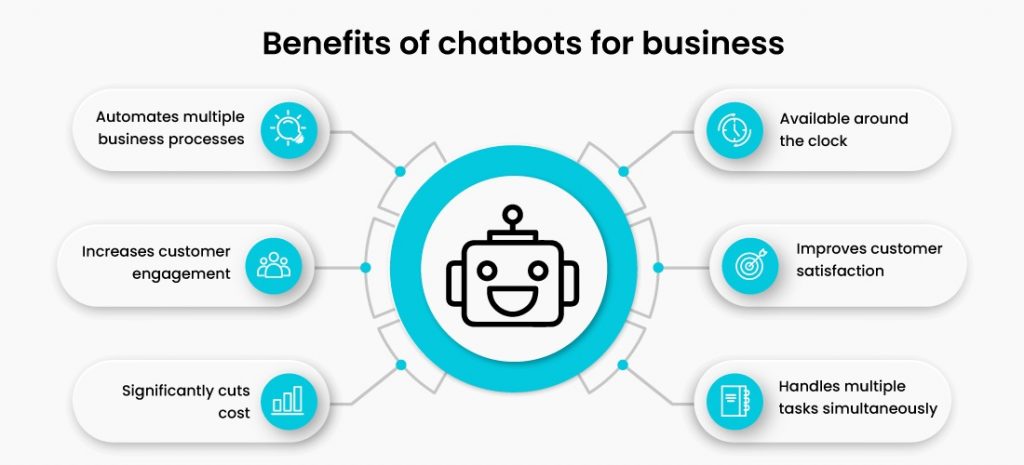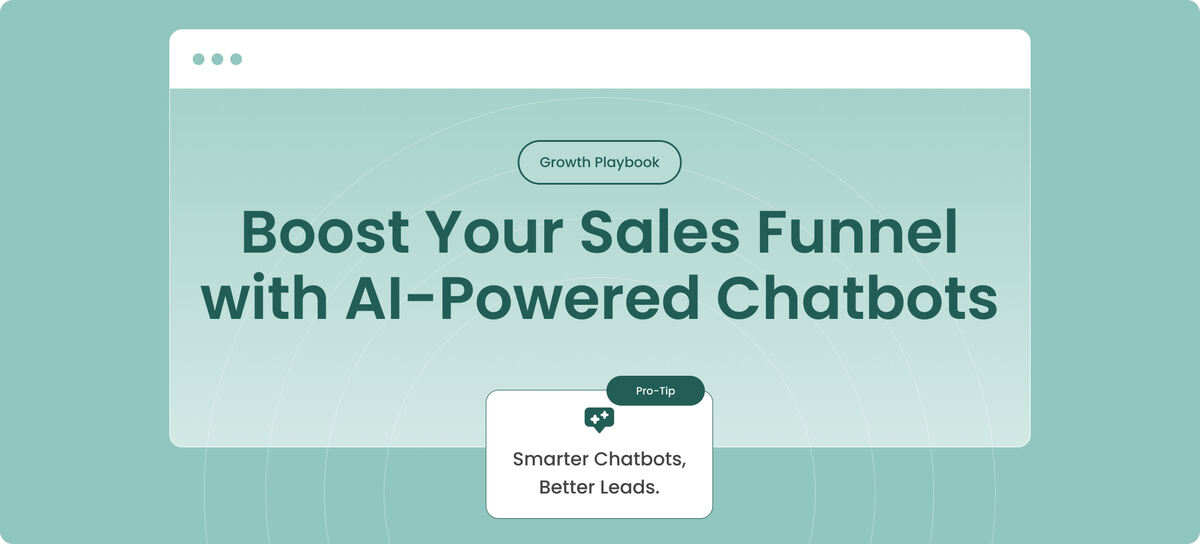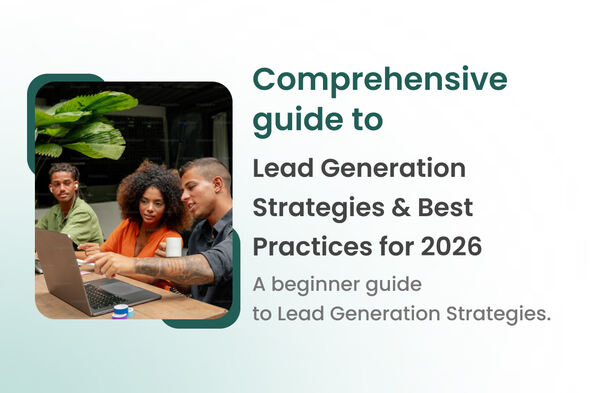Discover how chatbots can revolutionize lead generation by engaging potential customers in real-time, qualifying them, and collecting valuable contact information. Explore the benefits, challenges, and real-world examples of successful chatbot implementations, and learn how to get started with this powerful technology.
Chatbots for capturing leads have become one of the most effective tools for modern businesses looking to boost their marketing results and grow their customer base. By using chatbots for lead generation, companies can engage website visitors, qualify potential customers, and collect valuable contact information automatically. In this blog, we’ll show you how chatbots for capturing leads work, why they’re so effective, and how you can implement them to streamline your lead capture process. Discover why chatbots should be at the center of your customer engagement and lead generation strategy in today’s competitive digital landscape.
What Are Chatbots?
Chatbots are AI-powered tools designed to simulate human conversation. They can interact with users through text or voice, providing instant responses to queries. Available on websites, social media platforms, and messaging apps, chatbots are accessible 24/7, making them an invaluable asset for businesses looking to enhance customer engagement.
How Do Chatbots Capture Leads?
Chatbots capture leads by engaging with website visitors in real-time, asking relevant questions, and gathering contact information. Here’s how they do it:
- Instant Engagement: When a potential customer visits your website, a chatbot can immediately greet them and offer assistance. This instant engagement can help keep visitors on your site longer and encourage them to interact with your content.
- Qualifying Leads: Chatbots can ask qualifying questions to understand the needs and preferences of visitors. By gathering this information, chatbots can determine if a visitor is a potential lead and how valuable they might be to your business.
- Collecting Contact Information: Once a chatbot has engaged a visitor and qualified them as a lead, it can request contact information such as email addresses or phone numbers. This information can then be used for follow-up communication and nurturing.
- Personalized Interactions: Chatbots can provide personalized interactions based on the information they gather. By tailoring their responses to individual users, chatbots can create a more engaging and relevant experience, increasing the likelihood of capturing leads.
Benefits of Using Chatbots for Lead Generation
The use of chatbots for lead generation offers several significant benefits:

- 24/7 Availability: Unlike human agents, chatbots can operate around the clock, ensuring that potential leads are engaged and captured at any time of day or night.
- Scalability: Chatbots can handle multiple conversations simultaneously, making them an ideal solution for businesses looking to scale their lead generation efforts without a proportional increase in staffing costs.
- Immediate Response: Chatbots provide instant responses to queries, reducing the waiting time for potential leads and increasing the chances of capturing their interest.
- Cost-Effective: Implementing chatbots can be more cost-effective than hiring and training additional customer service or sales staff. Once set up, chatbots require minimal maintenance and can provide consistent performance.
- Data Collection and Analysis: Chatbots can gather valuable data on user interactions and preferences, providing insights that can be used to refine marketing strategies and improve lead generation efforts.
Challenges of Using Chatbots
While chatbots offer many advantages, there are also challenges to consider:
- Initial Setup and Integration: Setting up a chatbot and integrating it with existing systems can require significant time and technical expertise. However, many platforms now offer user-friendly interfaces that simplify this process.
- Handling Complex Queries: Chatbots can sometimes struggle with understanding and responding to complex or nuanced queries. It’s important to design your chatbot to handle common questions effectively and provide options for users to connect with a human agent when needed.
- Maintaining Human Touch: While chatbots are excellent for handling routine queries and capturing basic information, they may lack the personal touch that human agents can provide. Ensuring a seamless transition from chatbot to human agent when necessary can help maintain a positive user experience.
Examples of Successful Chatbot Implementations
Several businesses have successfully implemented chatbots to enhance their lead generation efforts:
- Sephora: Sephora uses a chatbot on Facebook Messenger to provide personalized beauty advice and product recommendations. By engaging users in a conversational manner, the chatbot captures valuable lead information and drives sales.
- H&M: H&M's chatbot on the Kik messaging app helps users find clothing items based on their style preferences. The chatbot gathers user data, such as style preferences and sizes, to provide tailored recommendations and capture leads.
- HubSpot: HubSpot's chatbot on their website engages visitors, answers questions, and collects contact information for follow-up. The chatbot helps qualify leads by asking relevant questions and directing them to the appropriate resources.
How to Get Started with Chatbots for Lead Generation
If you’re considering implementing a chatbot for lead generation, here are some steps to get started:
- Define Your Goals: Determine what you want to achieve with your chatbot. Are you looking to capture contact information, qualify leads, or provide customer support?
- Choose the Right Platform: Select a chatbot platform that aligns with your technical capabilities and business needs. Some popular options include Chatfuel, ManyChat, and HubSpot's chatbot builder.
- Design Conversational Flows: Plan the conversational flows and scripts for your chatbot. Ensure that the chatbot can handle common queries and guide users towards providing their contact information.
- Integrate with Existing Systems: Integrate your chatbot with your CRM or marketing automation platform to ensure that the leads captured are seamlessly added to your lead nurturing workflows.
- Test and Optimize: Launch your chatbot and continuously monitor its performance. Use the data collected to optimize your chatbot’s interactions and improve its effectiveness in capturing leads.
Conclusion

Chatbots offer a powerful and innovative way to capture leads by engaging with potential customers in real-time, qualifying them, and collecting valuable contact information. Their 24/7 availability, scalability, and cost-effectiveness make them an attractive option for businesses looking to enhance their lead generation efforts.
Ready to supercharge your lead generation with chatbots? At GrowEasy, we specialize in implementing cutting-edge chatbot solutions tailored to your business needs. Our expert team can help you design, integrate, and optimize chatbots that capture high-quality leads and drive your business growth. With GrowEasy, you’re not just adopting technology; you’re partnering with experts who understand how to leverage it for maximum impact.
Don't let potential leads slip through the cracks. Contact GrowEasy today and take the first step towards revolutionizing your lead generation strategy! Let’s work together to transform your customer engagement and take your business to new heights.
FAQs
1. What is a chatbot?
A chatbot is an AI-powered tool designed to simulate human conversation. It can interact with users through text or voice, providing instant responses to queries and engaging with potential customers in real-time.
2. How do chatbots help in capturing leads?
Chatbots capture leads by engaging website visitors, asking qualifying questions, and collecting contact information such as email addresses or phone numbers. This process helps in identifying and nurturing potential customers.
3. What are the benefits of using chatbots for lead generation?
The benefits include 24/7 availability, scalability, immediate response, cost-effectiveness, and the ability to gather and analyze valuable data on user interactions and preferences.
4. What challenges might businesses face when using chatbots for lead generation?
Challenges include the initial setup and integration, handling complex queries, and maintaining a human touch in customer interactions. It’s important to design chatbots that can transition users to human agents when needed.
5. Can chatbots handle complex customer queries?
While chatbots are excellent for handling routine queries and basic information gathering, they may struggle with complex or nuanced queries. It’s essential to have a system in place for users to connect with a human agent when necessary.
6. How can I integrate a chatbot into my existing systems?
To integrate a chatbot, you need to choose a suitable platform, design conversational flows, and connect the chatbot with your CRM or marketing automation system. This ensures that the leads captured are seamlessly added to your lead nurturing workflows.
7. Are chatbots cost-effective compared to human agents?
Yes, chatbots can be more cost-effective than hiring and training additional customer service or sales staff. Once set up, chatbots require minimal maintenance and can provide consistent performance.
8. Can chatbots help in personalizing user interactions?
Yes, chatbots can provide personalized interactions based on the information they gather from users. By tailoring their responses to individual users, chatbots can create a more engaging and relevant experience.
9. How can I get started with chatbots for lead generation?
To get started, define your goals, choose the right platform, design conversational flows, integrate the chatbot with your existing systems, and continuously monitor and optimize its performance.






